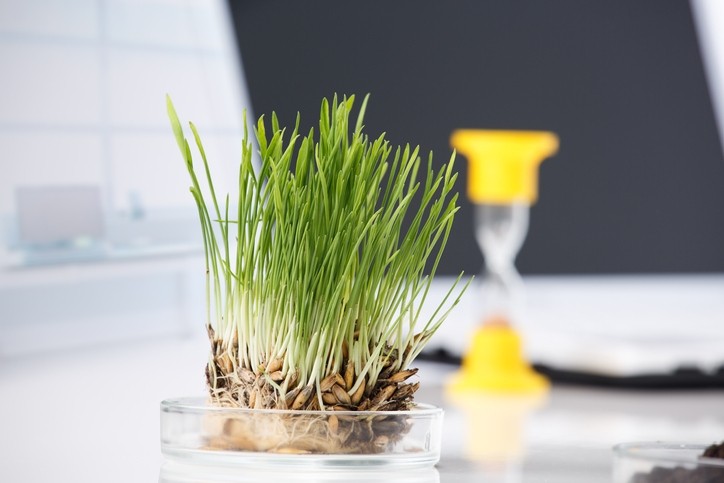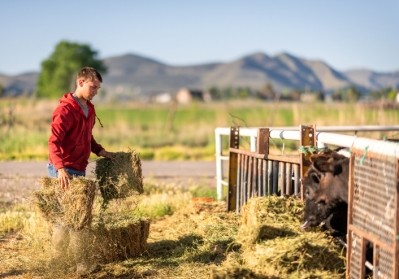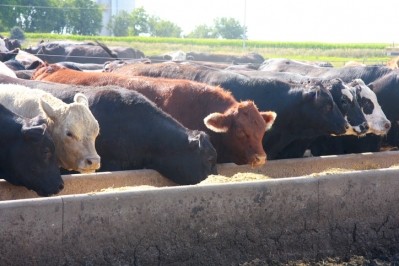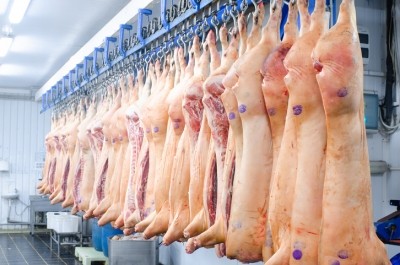Research center focuses on improving cattle forage

Researchers with the International Center for Tropical Agriculture (CIAT) tracked a genomic region, ASGR, in the forage species Brachiaria in a project that may allow for improved breeding and development of the forage plant in the future and provide better forage for livestock producers.
CIAT is a research center working with partners in developing countries to improve farming practices to make it more resilient, profitable and competitive using sustainable natural resource management.
The work focuses on several of the sustainable development goals (SDGs) outlined by the United Nations and covers four themes – big data, climate-smart agriculture, sustainable food systems and ecosystem action.
The work being done with Brachiaria looks to improve strains of the plant for use as a feed crop, said Valheria Castiblanco, plant breeder, CIAT.
“We have different approaches … one is the development of forage alternatives for farmers to use, but we also aim to understand the livestock systems and improve all related environmental impacts, which is a huge part of what CIAT does,” she told FeedNavigator. “Based on that theoretical information, we also support policy agencies in tropical countries to try to focus the livestock in a more efficient, but also environmentally friendly way – so we have this focus of policy impact, environmental impact and also the development of forage options.”
The group’s larger project is to improve the livelihoods of farmers while addressing environmental issues connected to agriculture, said Jacobo Arango, a researcher with CIAT.
“In our case, we work with livestock and forages,” he added.
Why focus on forage?
The improvement work has focused on development and understanding of several strains of Brachiaria, said Castiblanco. The group is currently working to prepare a new strain for commercial use.
“In tropical livestock production it wasn’t a practice to use or to understand the forage as a crop,” she said. “It was more that the animals used to eat whatever was in the farm – secondary products or even cutting down jungle or forest and whatever grows there is what the animals are going to eat – and the consequences of that is the animal production is not as productive as it should be.”
Those production practices had environmental implications as forest or jungle was removed for livestock production, she said. And, animals tended to have high gas emissions.
“If we’re able, on the first hand, to teach the farmers that the forage should be managed indeed as a crop and, additionally, we offer them options for forages which they can handle, and we teach them how to handle them, and also they are able to feed properly their animals then we’ll be able to reduce all these environmental impacts,” she said.
Producers will be able to have increased production using less land and while generating a smaller amount of greenhouse gases, she added.
Improving forages
The research group has a breeding program focused on understanding and improving the genetics of the forages being used, said Arango. Improved understanding of the plants allows for faster breeding.
The group discovered that Brachiaria humidicola has the ability to improve soil health parameters, he said.
The researchers also found and tracked a genetic marker in the plant that is linked to the plant’s reproduction process and should allow for quicker breeding and the replication of desired plant traits.
Plants with the specific genetic marker reproduce asexually and without losing desired characteristics in the offspring, he said.
“When you have the offspring or when the plant goes to the farmers’ fields – they remain genetically identical and, therefore, the characteristics that were selected in this specific cultivar or species or plant are kept,” he added.
The goal of the research is to establish a portfolio of plant varieties with three different strains, said Castiblanco.
One varietal, the interspecific hybrid, would generate a large amount of high-quality biomass, while another would be able to produce in areas with stresses like flooding or drought, she said. The third also produces a large amount of biomass, but requires inputs, so efforts are ongoing to make the strain more robust.
The plant strains are intended to support producers working with lands that could vary in quality or stress, she said. The goal is to release the new humidicola in 2021 or 2022 and to continually refine the strains available.
“From this moment until that what we’re doing is to we’re making all the testing in house testing and we are also doing environmental trials to understand both the biotic and abiotic constraints and how the genotypes address it and also in terms of product to see how they adapt to different environmental condition,” Castiblanco said.
Source: BMC Genomics
Title: Translocation of a parthenogenesis gene candidate to an alternate carrier chromosome in apomictic Brachiaria humidicola
Authors: M. Worthington, M. Ebina, N. Yamanaka, C. Heffelfinger, C. Quintero, Y. Zapata, J. Perez, M. Selvaraj, M. Ishitani, J. Duitama, J. de la Hoz, I. Rao, S. Dellaporta, J. Tohme, J. Arango
DOI: doi.org/10.1186/s12864-018-5392-4










